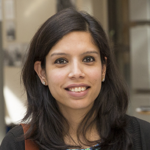Blog
Moving out of identity silos and into intersectionality
The example of gender identity
Women are undoubtedly doing better today than they were even 40-50 years ago. The gender gap has shrunk in many areas, including educational attainment, health, and employment and wages. Despite these advances, we cannot become complacent as there is still much work to be done.
Thankfully, gender is a continuing focus in the development sphere, with SDG5 calling for greater equality and women’s empowerment. Gender features heavily in the new UNU-WIDER work programme too, with each project being considered through a gendered lens. It also includes a project that focuses solely on the topic of women’s work in developing countries.
But as we move forward and push for fairer policies and better conditions for women, we should remember to take a moment to look back, to reflect on what we’ve learnt so far, because while we have made progress, it hasn’t all been fair and equal.
Overlooking the layers
While the increased and ongoing focus on gender and on the disadvantage experienced by women is an important and welcome discussion, an aspect that is still frequently overlooked is the status of women who are disadvantaged not just by their gender but also by other dimensions of their identity such as ethnicity, religion, economic class, sexual orientation etc.
We find that it is the overlap of these multiple identities that is important for determining outcomes such as jobs, health and education
Historically, women’s rights movements have better represented the viewpoint of women who belong to the majority group. For example, in the United States, much of the early waves of feminism were movements for white women, while in India, political movements about caste and gender have generally included Dalit (historically marginalized low-caste) men and high-caste women. Thus, black women in the US, and Dalit women in India have been left behind due to their unique, multi-dimensional disadvantage as a minority groupwithin a minority group. This is an example of what social psychologists refer to as ‘intersectional invisibility’, where individuals belonging to multiple minority groups are not represented by any one group, and are often considered as fringe groups within their individual identity groups.
This results in policies and laws being put in place to satisfy the loudest voices, the majority’s voice, resulting in those in the fringe groups being left behind, yet again without a seat at the table.
No woman left behind
The point here is not to keep score of whether those with single minority identities do better or worse than those with multiple minority affiliations, but to understand the implications of intersecting identities for individuals as well as for policy. Where programmes or policies address or target only a single factor, we may end up leaving behind those who live with multiple characteristics of disadvantage.
For instance, there is some research on India which argues that patriarchal gender norms are less likely among low-caste groups, implying that low-caste women have more freedom of movement and are more likely to work (here and here). However, the picture is far from clear, and others have argued that while low-caste women need to be economically active (as they tend to be poorer), they are not necessarily more empowered and are often subjected to specific forms of violence.
A recent analysis of electoral quota policies in India showed that policies targeted at increasing women’s representation in local governance positively affects welfare of women and low-caste groups, but quotas in favour of low castes do not have positive effects for women. This and other research suggests that there is a need to consider multiple dimensions of identity in framing policies.
Arguably, there is more that binds women together than drives them apart, and there is some merit in considering women as a homogeneous category. Certainly, it is analytically convenient to define individuals as having one identity and work in identity silos, but it is important to consider that people live and experience multiple identities simultaneously, and that needs to be better reflected in research and survey designs, analytical frameworks, and policy prescriptions.
Smriti Sharma is currently a Lecturer in Economics at Newcastle University Business School, United Kingdom. She was previously a Research Fellow at United Nations University – World Institute for Development Economics Research (UNU-WIDER). She works in the field of development economics. She has published on caste and gender-based discrimination in labour markets in India and Bangladesh and on caste-based violence in India. Read more about her work
This post originally appeared on the Blog 'Debating Development Research' of the European Association of Development Research and Training Institutes (EADI). Read the original article.
The views expressed in this piece are those of the author(s), and do not necessarily reflect the views of the Institute or the United Nations University, nor the programme/project donors.
 Join the network
Join the network



